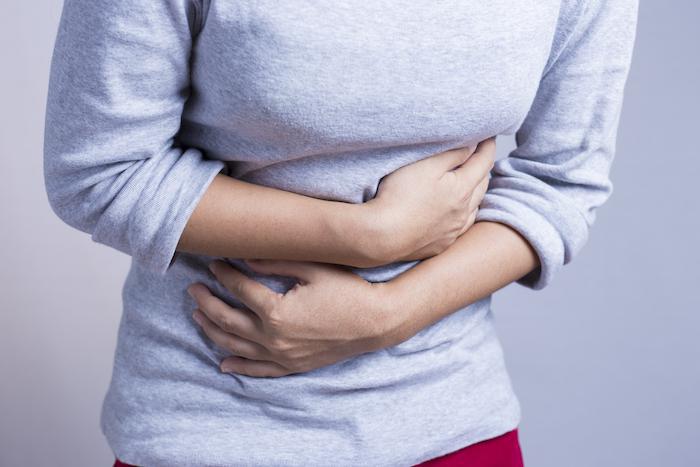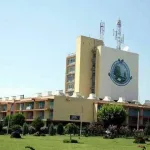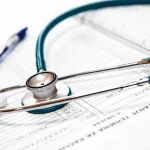Uterine Fibroids are Benign Smooth muscle tumours of the uterus.They are most common tumours of the female reproductive system.Uterine fibroids are seen in 50-60% of women (rising to 70% by 50 years of age) and,in 30% of cases, cause morbidity due to abnormal uterine bleeding and pelvic pressure.”African-American women have a greater chance of being affected by uterine fibroids,particularly at an earlier age than either white or Asian women”.They typically resolve after menopause.Uterine fibroids are not Cancer,and they almost never turn into Cancer.They’re also called Leiomyomas (lie-o-my-O-muhs) or Myomas.
Fibroids vary in number and size.You can have a single Fibroid or more than one.These can grow to Size of a Grapefruit or larger.A fibroid that gets very big can distort the inside and the outside of the uterus.In extreme cases,some Fibroids grow large enough to fill the pelvis or stomach area.They can make a person look Pregnant.Your health care Physician may just happen to find Fibroids during a Pelvic exam or Pregnancy Ultrasound.
A)Symptoms:
Many people who have uterine Fibroids don’t have any Symptoms.In those who do have Symptoms can be influenced by the Location,size and number of Fibroids.
The most common symptoms of uterine fibroids include:
1.Heavy menstrual bleeding or painful periods.
2.Longer or more frequent periods.
3.Pelvic pressure or pain.
4.Frequent urination or trouble urinating.
5.Growing stomach area.
6.Constipation.
7.Pain in the stomach area or lower back,or pain during Sex.
8.Rarely,a fibroid can cause sudden,serious pain when it outgrows its blood supply and starts to die.
Often,fibroids are grouped by their Location. a)Intramural fibroids grow within the muscular wall of the uterus.
b)Submucosal fibroids bulge into the uterine cavity.
c)Subserosal fibroids form on the outside of the uterus
B)Causes:
The exact cause of uterine fibroids isn’t clear.But these factors may play roles:
a)Gene changes.Many fibroids contain changes in genes that differ from those in typical uterine muscle cells.
b)Hormones:Two hormones called Estrogen and Progesterone cause the tissue the lines the inside of the uterus to thicken during each menstrual cycle to prepare for pregnancy.These hormones also seem to help fibroids grow.
c)Fibroids contain more cells that Estrogen and Progesterone bind to than do typical uterine muscle cells.Fibroids tend to Shrink after Menopause due to a drop in hormone levels.
d)Other growth factors:Such as insulin-like growth factor,may affect fibroid growth.
e)Extracellular matrix (ECM):This material makes cells stick together,like mortar between bricks.ECM is increased in fibroids and makes them fibrous.ECM also stores growth factors and causes biologic changes in the cells themselves.
“Doctors believe that uterine fibroids may develop from a Stem cell in the smooth muscular tissue of the uterus.A single cell divides over and over.In time it turns into a firm,Rubbery mass distinct from nearby tissue”
f)Fibroids that form during pregnancy can shrink or go away after pregnancy,as the uterus goes back to its usual size.
D)Risk factors:
There are few known risk factors for uterine fibroids,other than being a person of reproductive age.These include:
a)Race:All females of reproductive age who could develop fibroids.But Black people are more likely to have fibroids than are people of other racial groups.
b)Family history:If your mother or sister had fibroids,you’re at higher risk of getting them.
c)Other factors:Starting your period before the age of 10; obesity; being low on vitamin D; having a diet higher in red meat and lower in green vegetables,fruit and dairy;and drinking alcohol,including beer,seem to raise your risk of getting fibroids.
E)Complications:
Uterine fibroids often aren’t dangerous.But they can cause pain,and they may lead to complications.
a)These include a drop in red blood cells called Anemia.That condition can cause fatigue from heavy blood loss.
b)Pregnancy and fibroids:
1)Often,fibroids don’t interfere with getting pregnant.But some fibroids — especially the Submucosal fibroids — could cause infertility or pregnancy loss.
2)Fibroids also may raise the risk of certain pregnancy complications.These include:
3)Placental abruption: Neans when cmPlacenta separates from the inner wall of the uterus.
4)Fetal growth restriction:when an unborn baby doesn’t grow as well as expected.
5)Preterm delivery:when a baby is born too early,before the 37th week of pregnancy.
F)Prevention:
More research is needed on how to prevent them,though,here are some ways to prevent uterine fibroids:
a)You might be able to lower your fibroid risk with healthy lifestyle changes.
b)Try to stay at a healthy weight.Get regular exercise.And eat a balanced diet with plenty of fruits and vegetables.
c)Some research suggests that birth control pills or long-acting progestin-only contraceptives may lower the risk of fibroids.
G)Diagnosis:Your Physician may feel irregular changes in the shape of your uterus,suggesting the presence of fibroids.If you have symptoms of uterine fibroids, you may need these tests:
1) Abdominal Ultrasound & Transvaginal Ultrasound.
2)Lab tests:These include a complete blood count to check for Anemia due to ongoing blood loss.
3)Other imaging tests:Like;
a)Magnetic resonance imaging (MRI):This test can show in more detail the size and location of fibroids.
b)Hysterosonography(his-tur-o-
c)Hysterosalpingography:(his-
d)Hysteroscopy:For this exam,your Physician inserts a small,lighted telescope called a hysteroscope through your cervix into your uterus.Then saline is injected into your uterus.This expands the uterine cavity and lets your doctor check the walls of your uterus and the openings of your fallopian tubes.
H)Treatment:
There’s no single best treatment for uterine fibroids.Many treatment choices exist.If you have symptoms,talk with your Physician about ways to get relief.
a)Watchful waiting:
Many people with uterine fibroids have no symptoms.Or they have mildly annoying symptoms that they can live with.If that’s the case for you,watchful waiting could be the best option.
b)Fibroids aren’t cancer:They rarely interfere with pregnancy.They often grow slowly — or not at all — and tend to shrink after menopause,when levels of reproductive hormones drop.
C)Medicines:
Medicines for uterine fibroids target hormones that control the menstrual cycle. They treat symptoms such as heavy menstrual bleeding and pelvic pressure.They don’t get rid of fibroids,but they may shrink them.Medicines include:
1)Gonadotropin-releasing hormone (GnRH) agonists:These treat fibroids by blocking the body from making the hormones estrogen and progesterone.This puts you into a temporary menopause-like state.As a result,menstrual periods stop,fibroids shrink and anemia often gets better.
2)Gonadotropin-releasing hormone (GnRH) antagonists:These medicines can treat heavy menstrual bleeding in people with uterine fibroids who haven’t gone through menopause.But they don’t shrink fibroids.GnRH antagonists can be used for up to two years.
3)Progestin-releasing intrauterine device (IUD):A progestin-releasing IUD can relieve heavy bleeding caused by fibroids.It only relieves symptoms,though.It doesn’t shrink fibroids or make them go away.It also prevents pregnancy.
4)Tranexamic acid(Lysteda,T-Stat, Cyklokapron):This nonhormonal medicine can ease heavy menstrual periods.You take it only on heavy bleeding days.
5)Other medicines:Your Physician might recommend other medicines.For example, low-dose birth control pills can help control menstrual bleeding.But they don’t reduce fibroid size.
Medicines called nonsteroidal anti-inflammatory drugs(NSAIDs)may help relieve pain tied to fibroids,but they don’t reduce bleeding caused by fibroids.NSAIDs aren’t hormonal medicines. Examples include ibuprofen(Ibugesic & others) and Naproxen sodium(Nexdom).Your Physician also may suggest that you take vitamins and iron if you have heavy menstrual bleeding and anemia.
Noninvasive procedure:Focused Ultrasound Surgery(FUS):
A noninvasive treatment doesn’t involve surgical cuts called incisions.It also doesn’t involve tools being placed in the body.With uterine fibroids,a procedure called MRI-guided focused ultrasound surgery(FUS) is:A noninvasive treatment option that preserves the uterus.It’s done on an outpatient basis,meaning you don’t have to spend the night at the hospital afterward.Done while you’re inside an MRI scanner equipped with a high-energy ultrasound device for treatment.The images give your doctor the precise location of the uterine fibroids.When the location of the fibroid is targeted,the ultrasound device focuses sound waves into the fibroid to heat and destroy small areas of fibroid tissue.
Minimally invasive procedures:
Uterine artery embolization
Laparoscopic radiofrequency ablation
These procedures use no cuts or small cuts like;
Uterine artery embolization:Small particles called embolic agents are injected into the arteries that supply the uterus with blood. The particles cut off blood flow to fibroids, causing them to shrink and die.
Radiofrequency ablation:In this procedure, heat from radiofrequency energy destroys uterine fibroids and shrinks the blood vessels that feed them.
Laparoscopic or robotic myomectomy:In a myomectomy,your surgeon removes the fibroids and leaves the uterus in place.
Hysteroscopic myomectomy:This procedure may be an option if the fibroids are inside the uterus, also called submucosal fibroids.The fibroids are removed using tools placed through the vagina and cervix into the uterus.
Endometrial ablation:This procedure can reduce heavy menstrual flow.A device that’s inserted into the uterus gives off heat,microwave energy,hot water,cold temperature or an electric current.This destroys the tissue that lines the inside of the uterus.
Traditional surgical procedures:
Options for traditional open surgeries that use a larger incision include:
Abdominal myomectomy:This type of surgery removes fibroids through a larger cut in the stomach area,also called the abdomen.Your doctor may recommend it if you have more than one fibroid,very large fibroids or very deep fibroids.
Hysterectomy:This surgery removes the uterus.It remains the only proven permanent solution for uterine fibroids. Hysterectomy ends your ability to bear children.
Dr Khalid Ur Rehman
MD Physician, Medical Officer J&K Health Services








